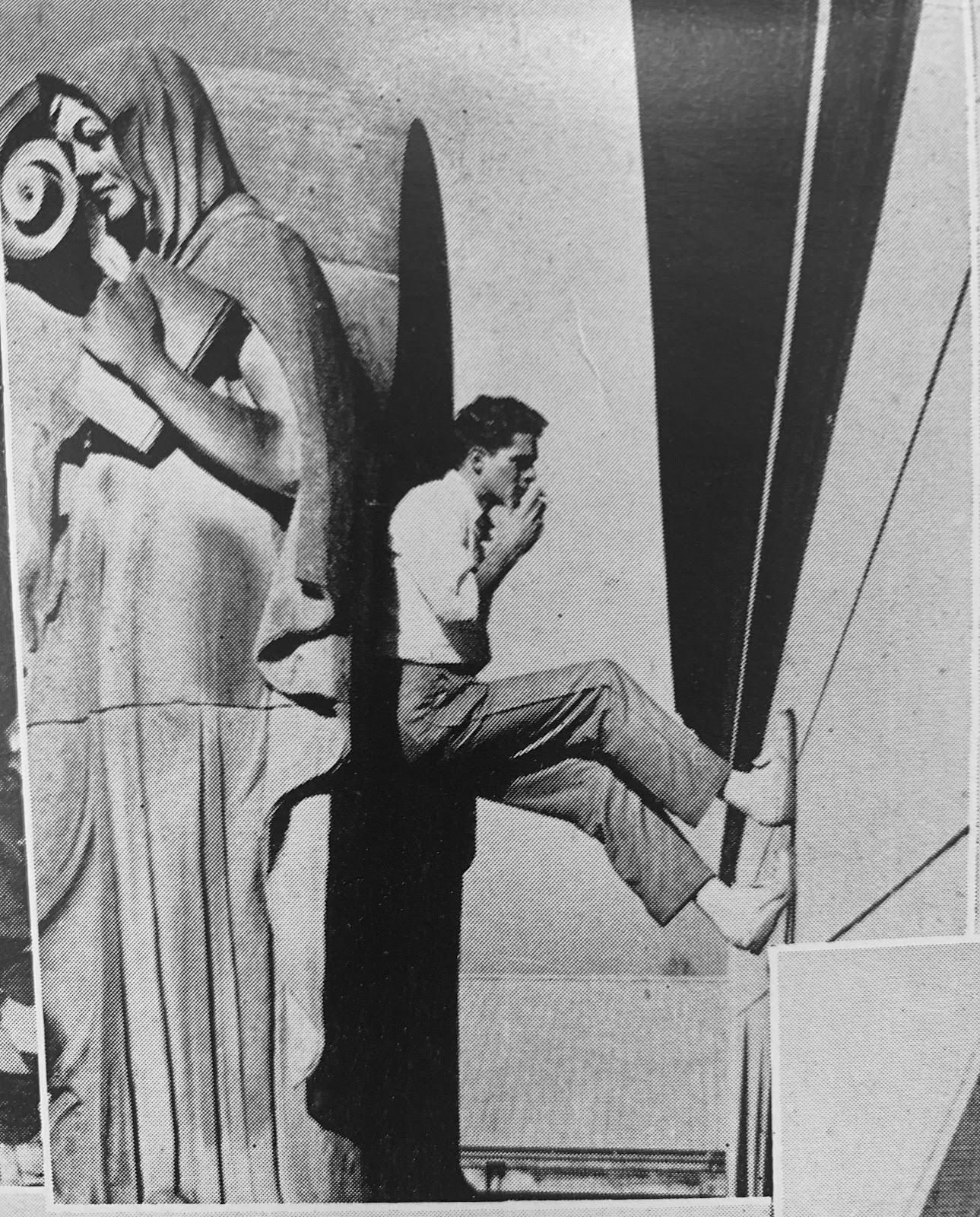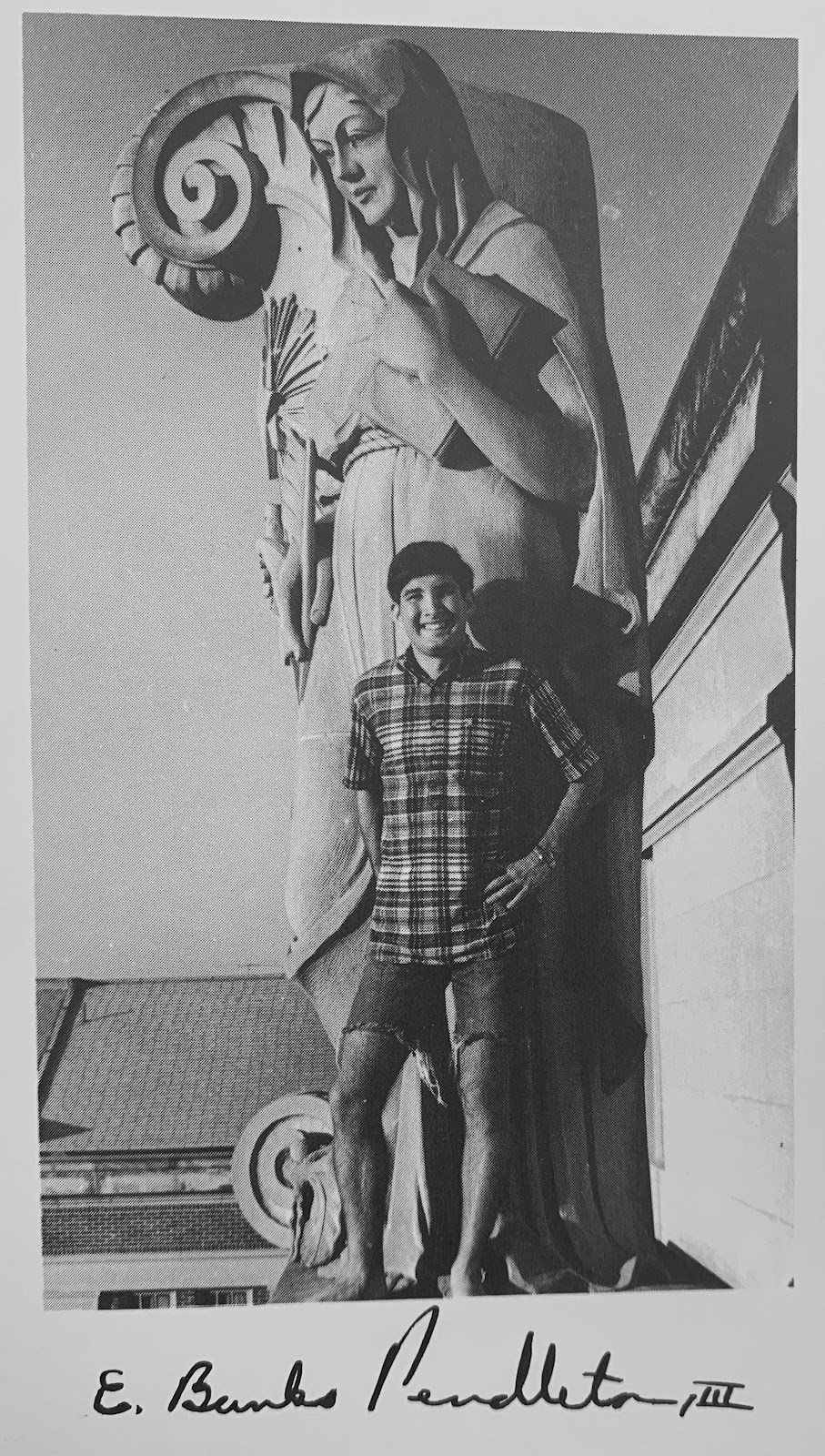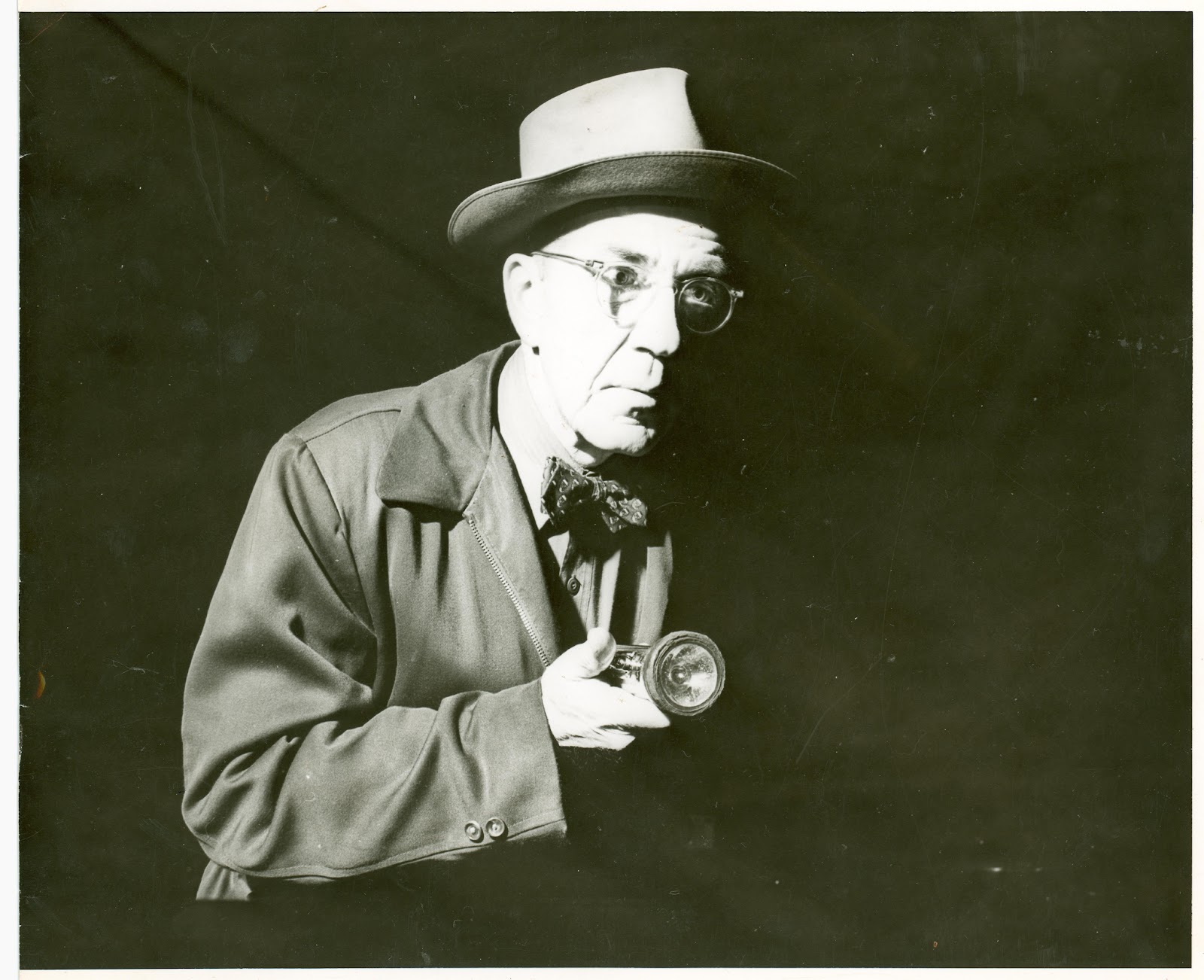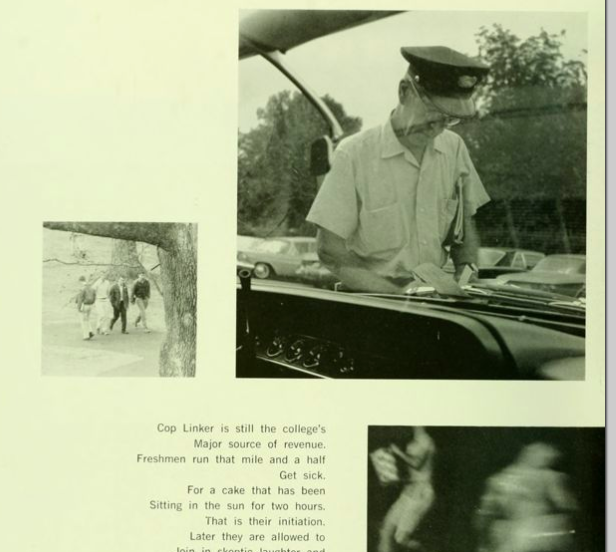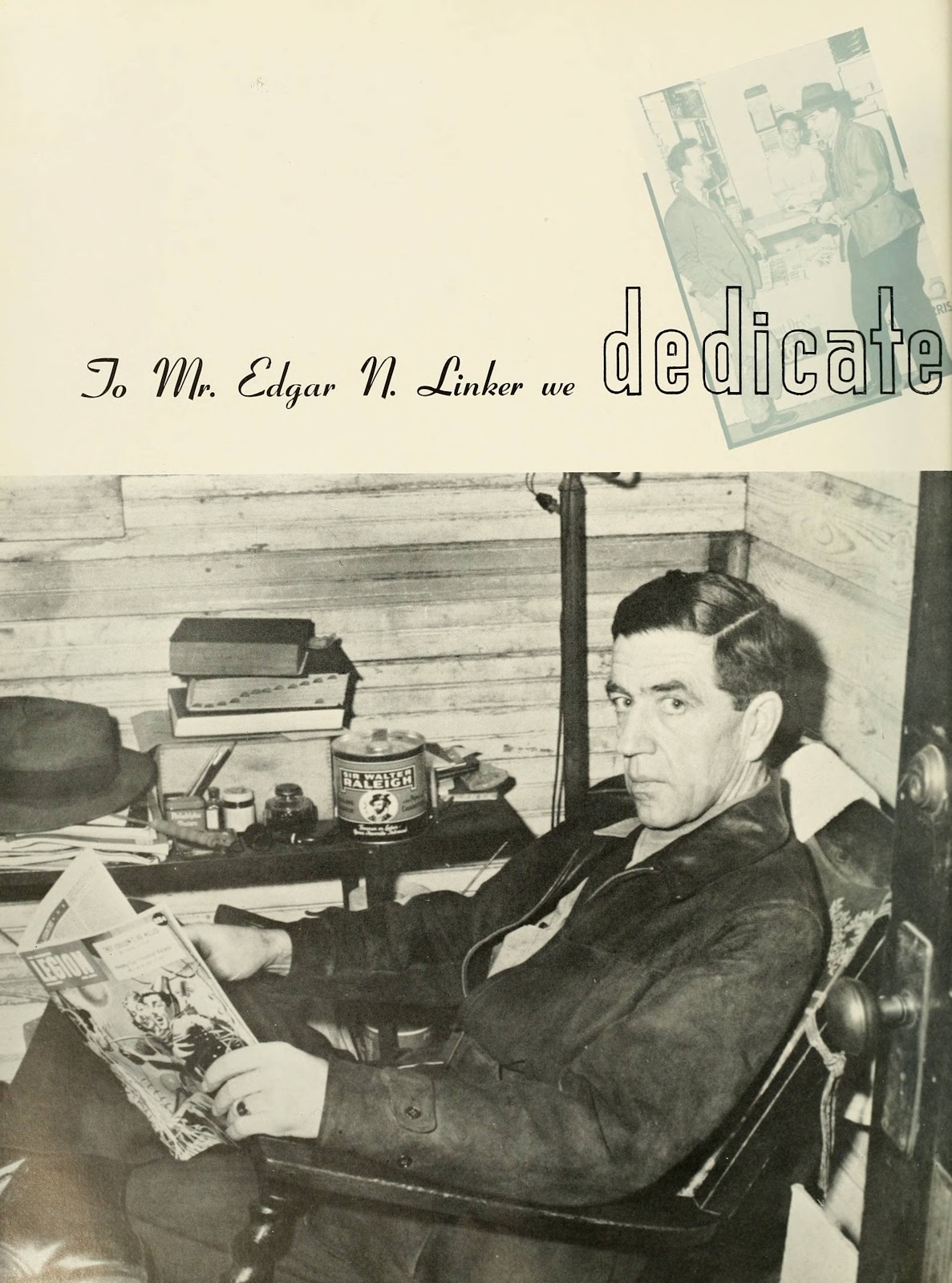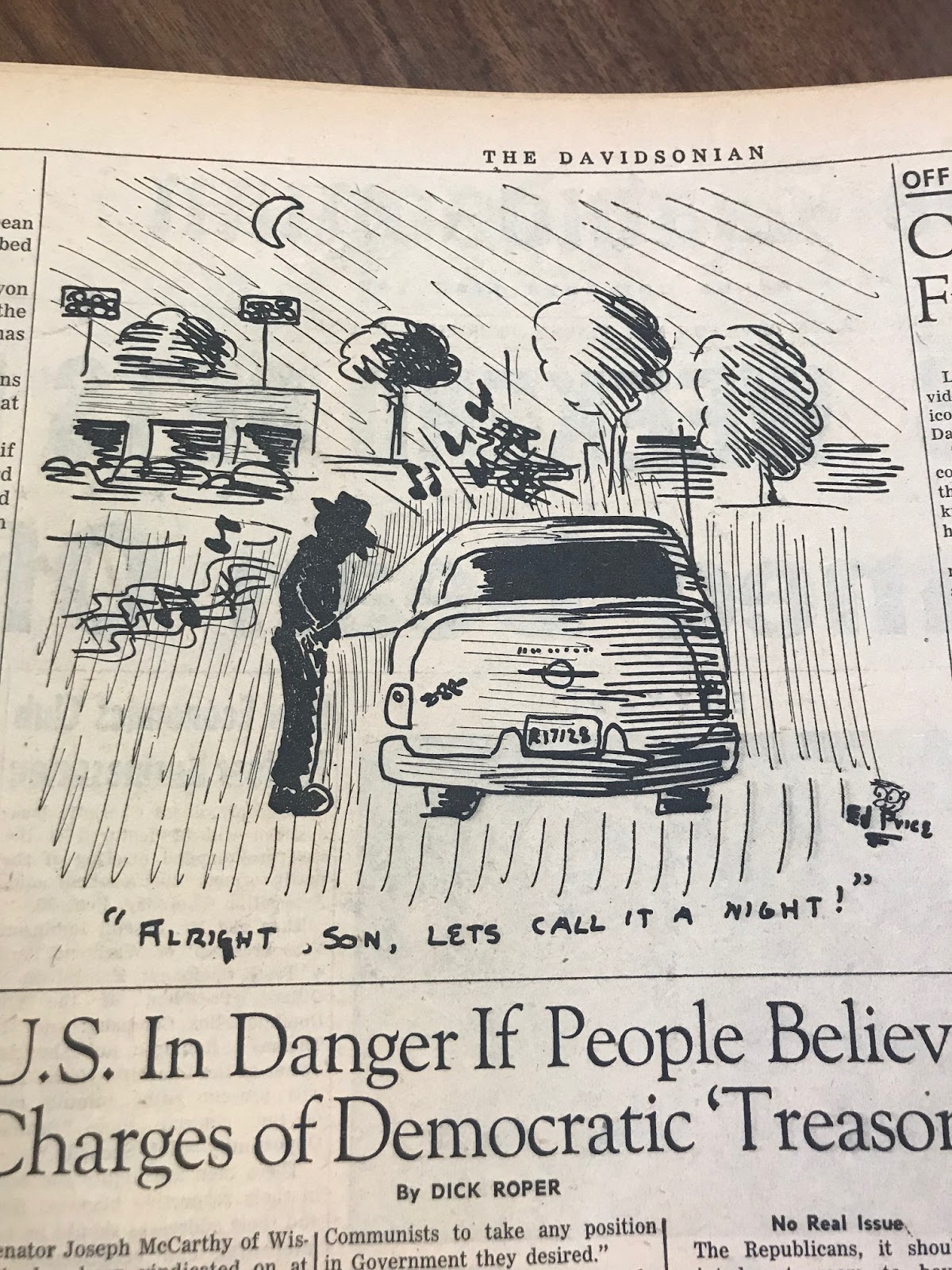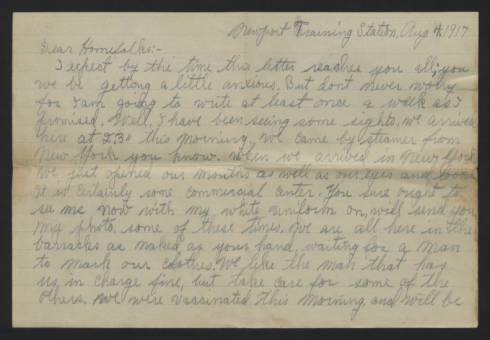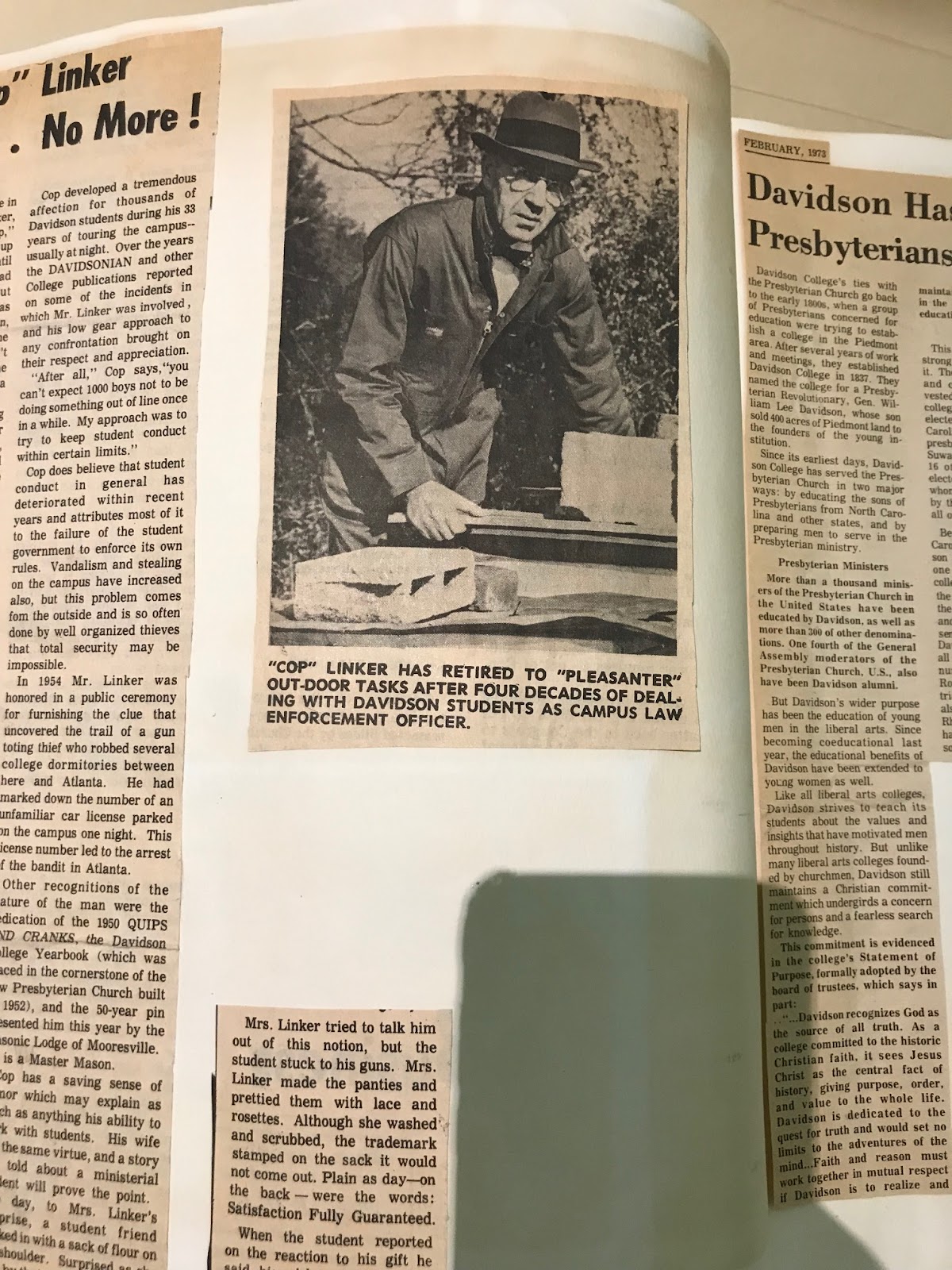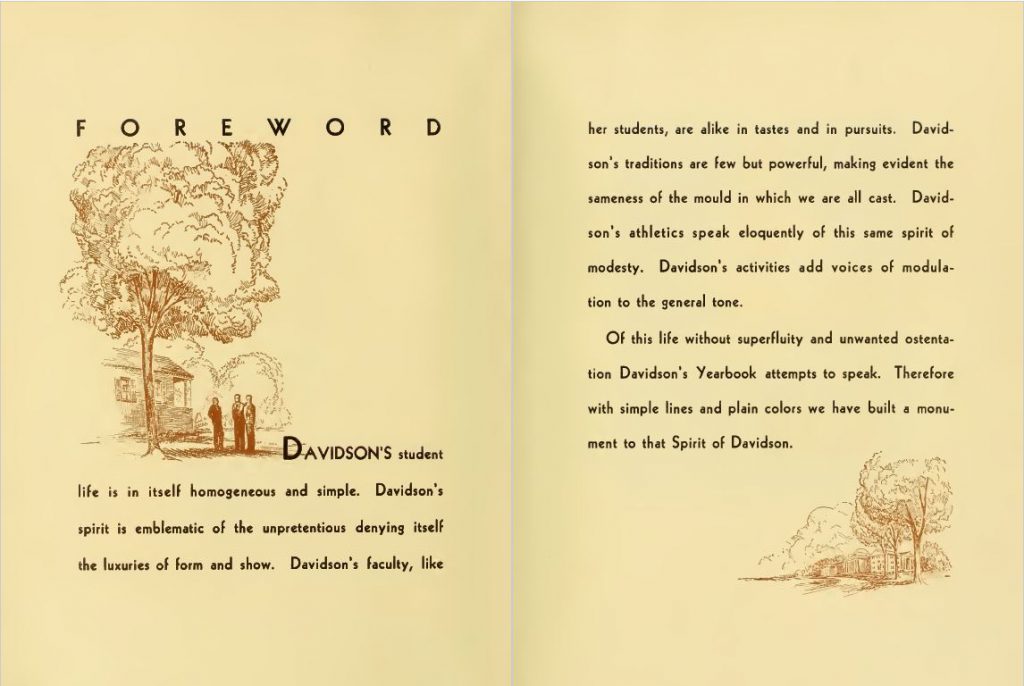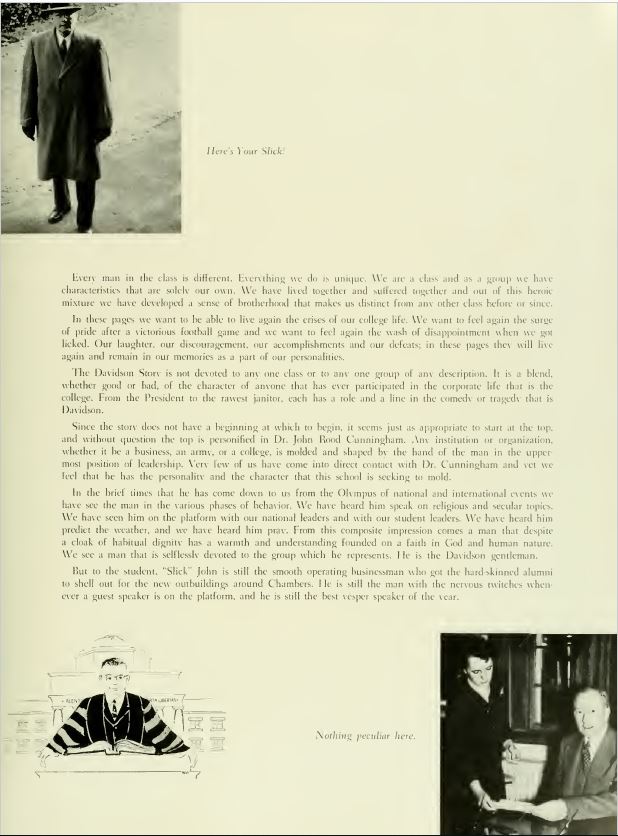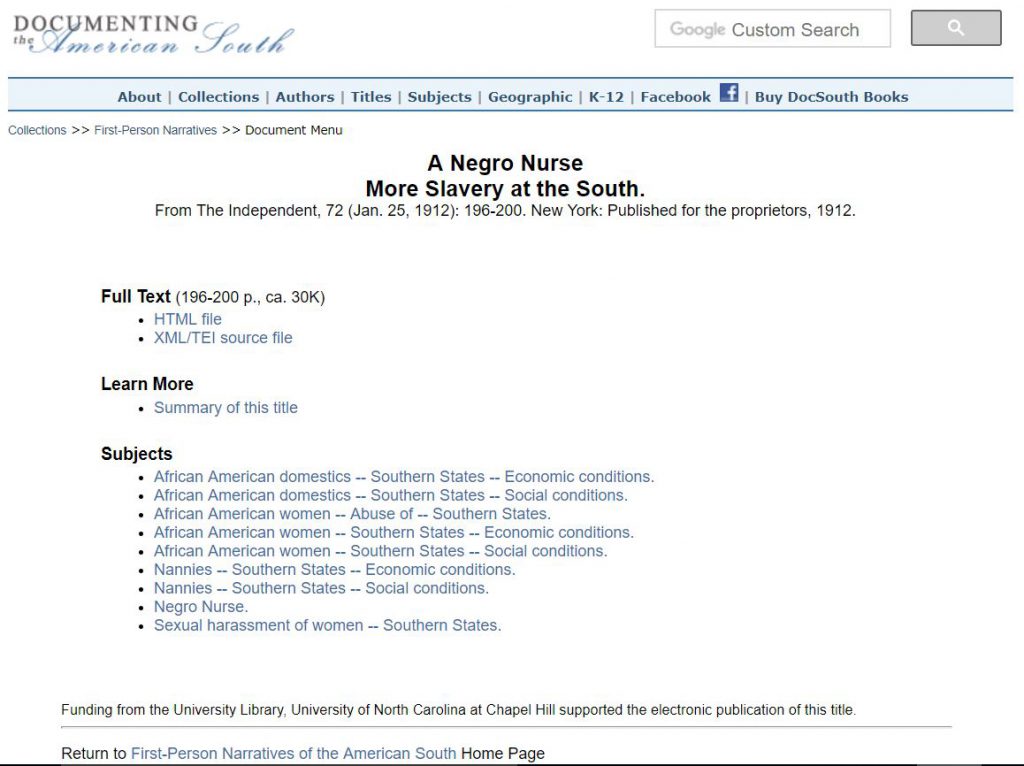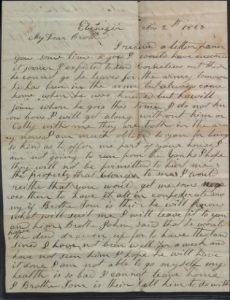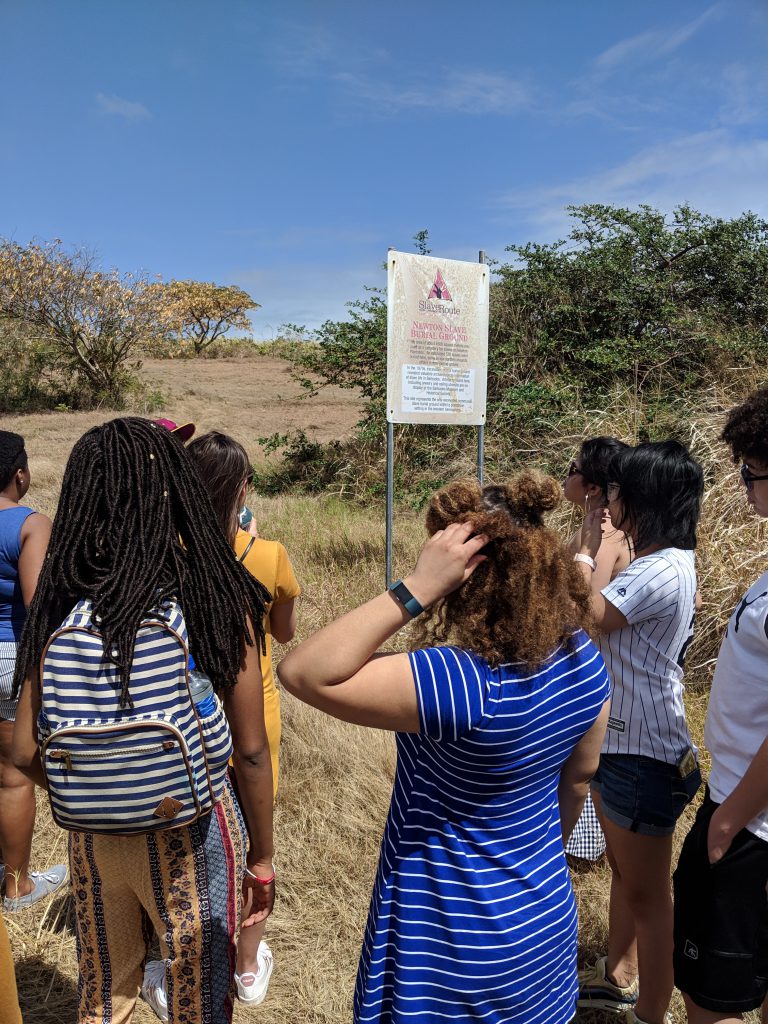Hello, once again this is Hannah Foltz, class of 2013 and current PhD student in rhetoric at the University of Texas at Austin and this is my last post for this summer.
Since 1929, the “top” position at Davidson has belonged to two women: the Chambermaids. This honorific belongs to the stony and silent figures perched above Chambers, the cloaked statues who flank the Davidson seal on the building’s capstone. For 90 years, the perpetually young ladies have surveilled campus, serving as muses, mascots, namesakes, and even as a destination. Here are some of our favorite stories about the Davidson Chambermaids:
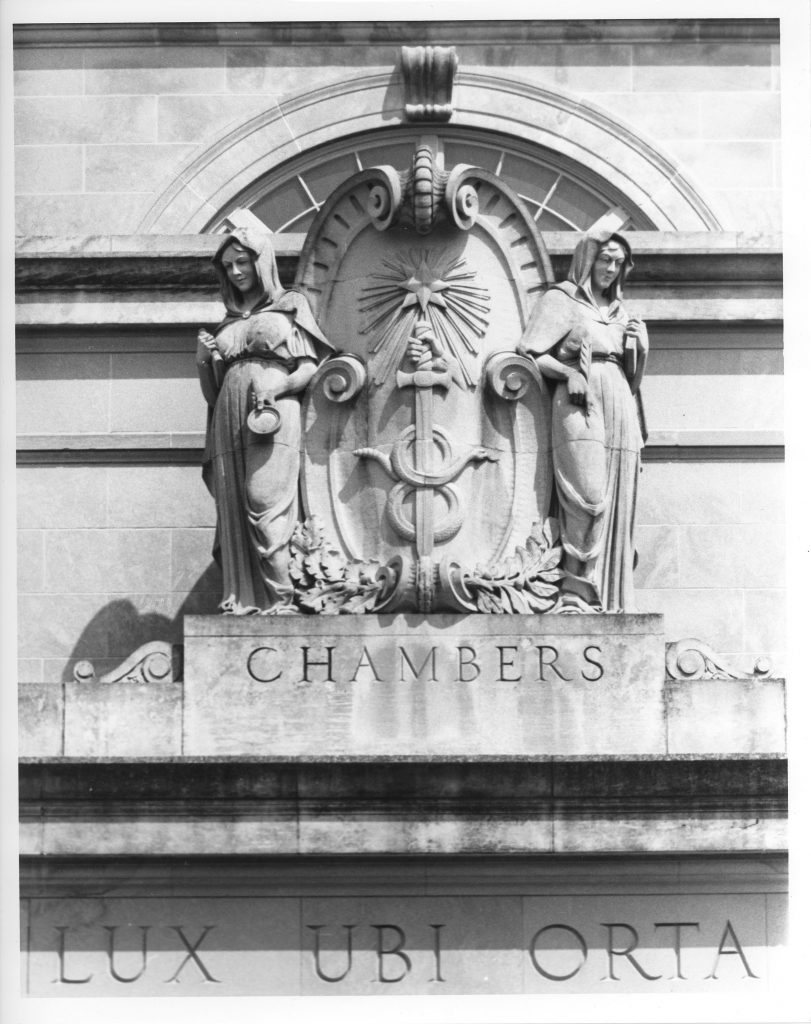
1. They have names.
While we don’t know who christened them, a 1937 article reveals that the Chambermaids are named Alma and Mater (“Davidson Data,” Scripts n’ Pranks, Mar 1937, p. 14) . From the viewers’ perspective, Alma is to the right and Mater to the left (“Candid Campus,” Scripts n’ Pranks, Dec 1937, p. 13).
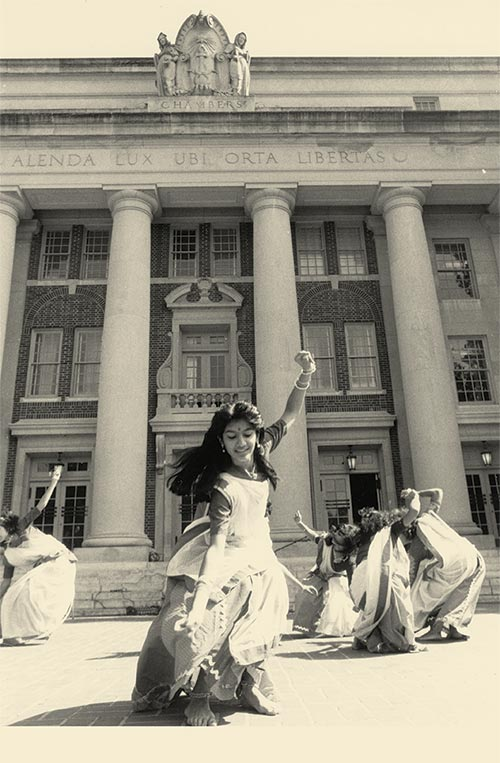
A student dances under the eyes of the Chambermaids at Davidson’s first International/Intercultural Festival in 1986.
2. They have different but complementary strengths.
True to their institution, the Chambermaids represent the best of the liberal arts. Alma is more literary; she carries a book and a quill. Mater is the scientific sister; she pairs her book with a magnifying glass. (An alternate theory could be that Mater is simply farsighted.)
3. One maid may only have four fingers.
“Davidson Data,” published in 1937, claims that one of the ladies only has four fingers—but doesn’t specify which maid is missing a digit (Scripts n’ Pranks, Mar 1937, p. 14). Enlarged photographs suggest it may be Mater, but reports have not been confirmed by this author.
4. They’ve been known to tipple.
In 1942, when still-dry Davidson was in the middle of one of many (many, many) arguments about drinking regulations, the campus awoke to a tin sign suspended between the two statues. It read, “Hornung’s Beer and Ale.” Enoch Donaldson, a longtime janitor at the school, had to climb to the roof and cut down the sign.
The incident prompted Al Winn, student body president and valedictorian, to compose a series of verse parodies chronicling the sign’s hanging.
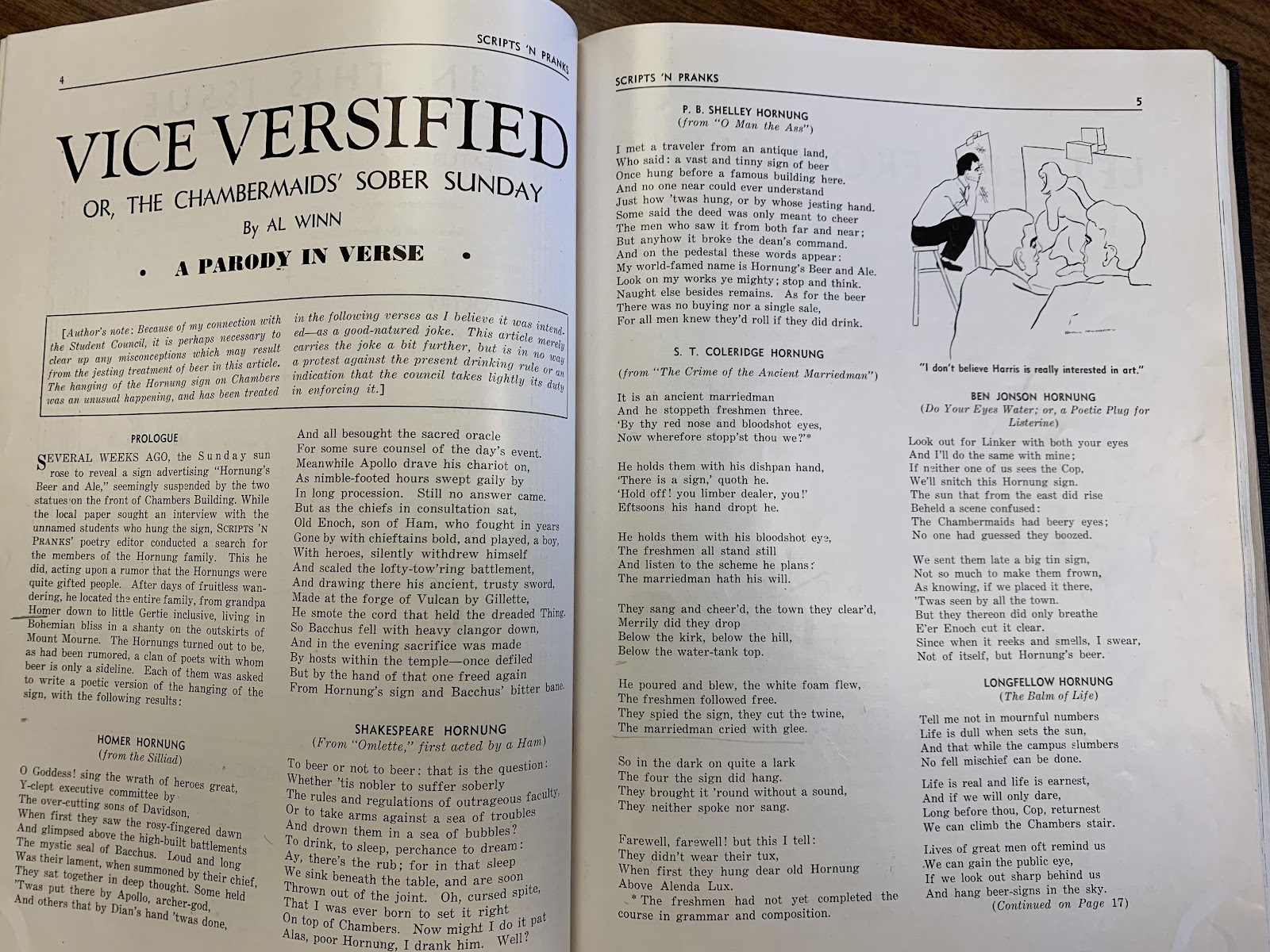
5. They’re two of Davidson’s most inspiring muses.
The maids have inspired many creative endeavors, both visual and verbal. They are no stranger to the male gaze; many young men have admired—and exaggerated—their sensual appeal. In 1947, Sam Robinson ‘49, went so far as to imagine entertaining the ladies in his Watts dorm room. Safe to say, Alma and Mater may not put much stock in the notion of the “Davidson gentleman.”
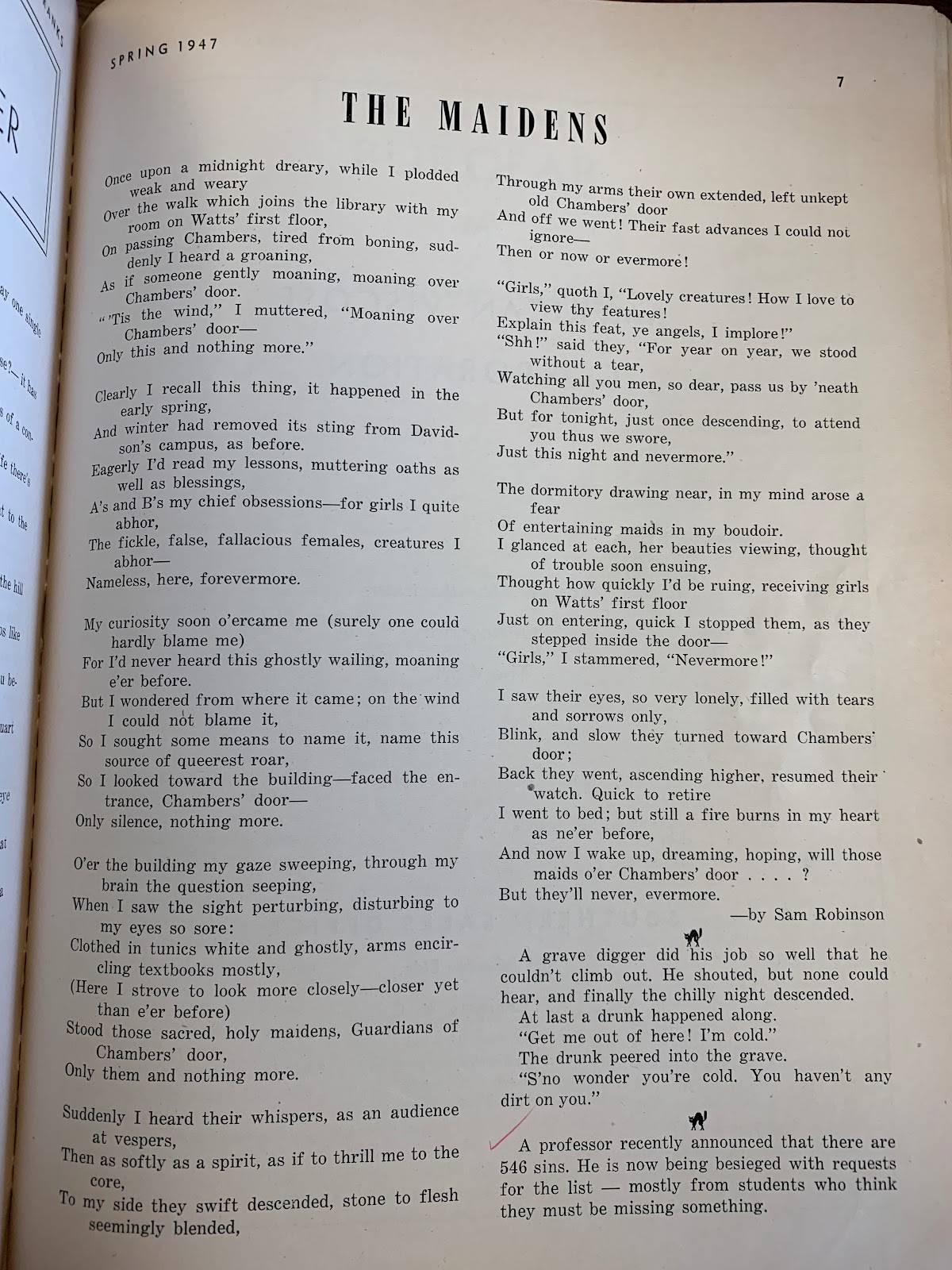
Robinson, Sam. “The Maidens,” Scripts n’ Pranks, Spring 1947, p. 7.
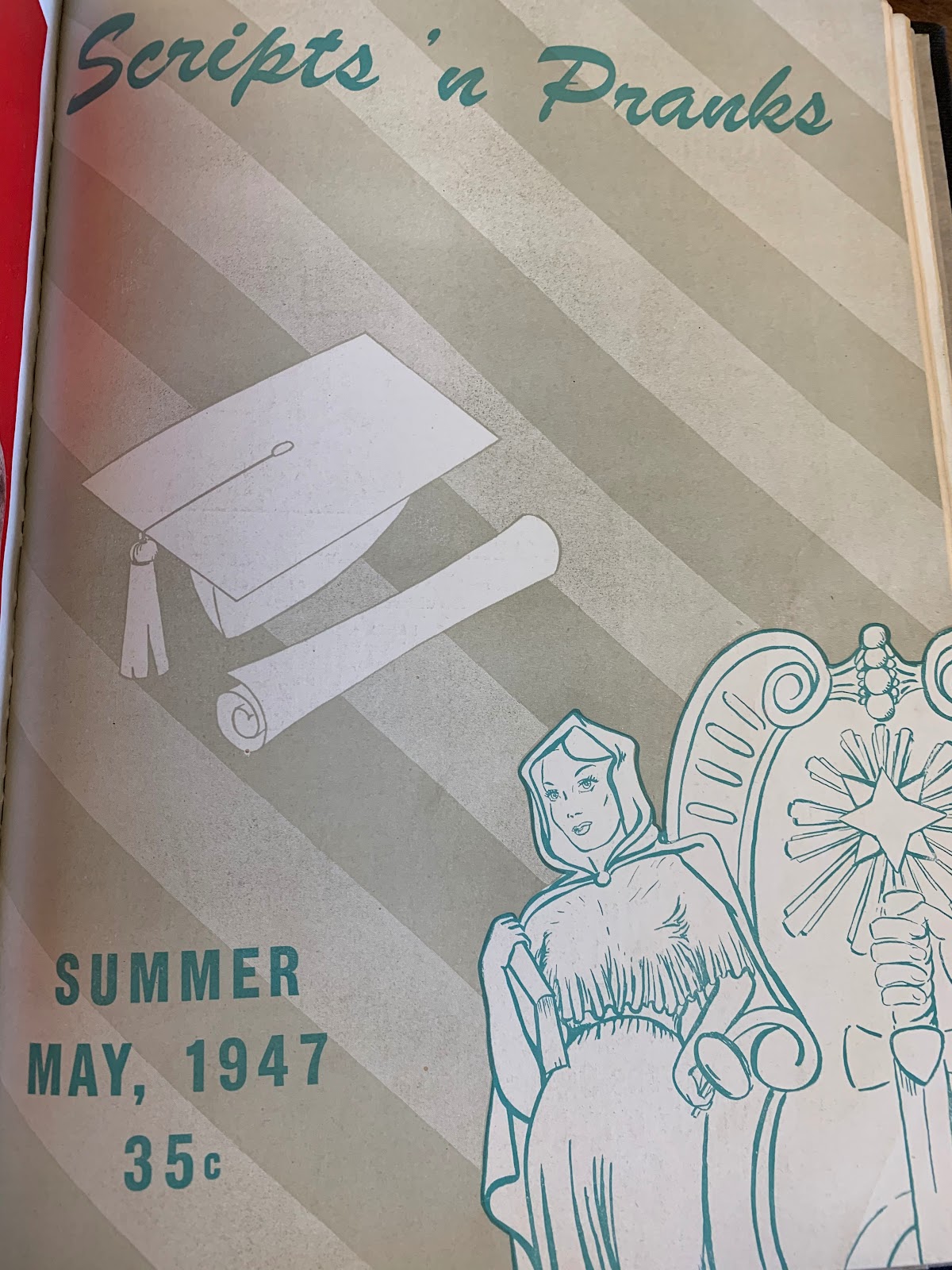
Elliot, Jim. Scripts n’ Pranks, Summer 1947, Cover.
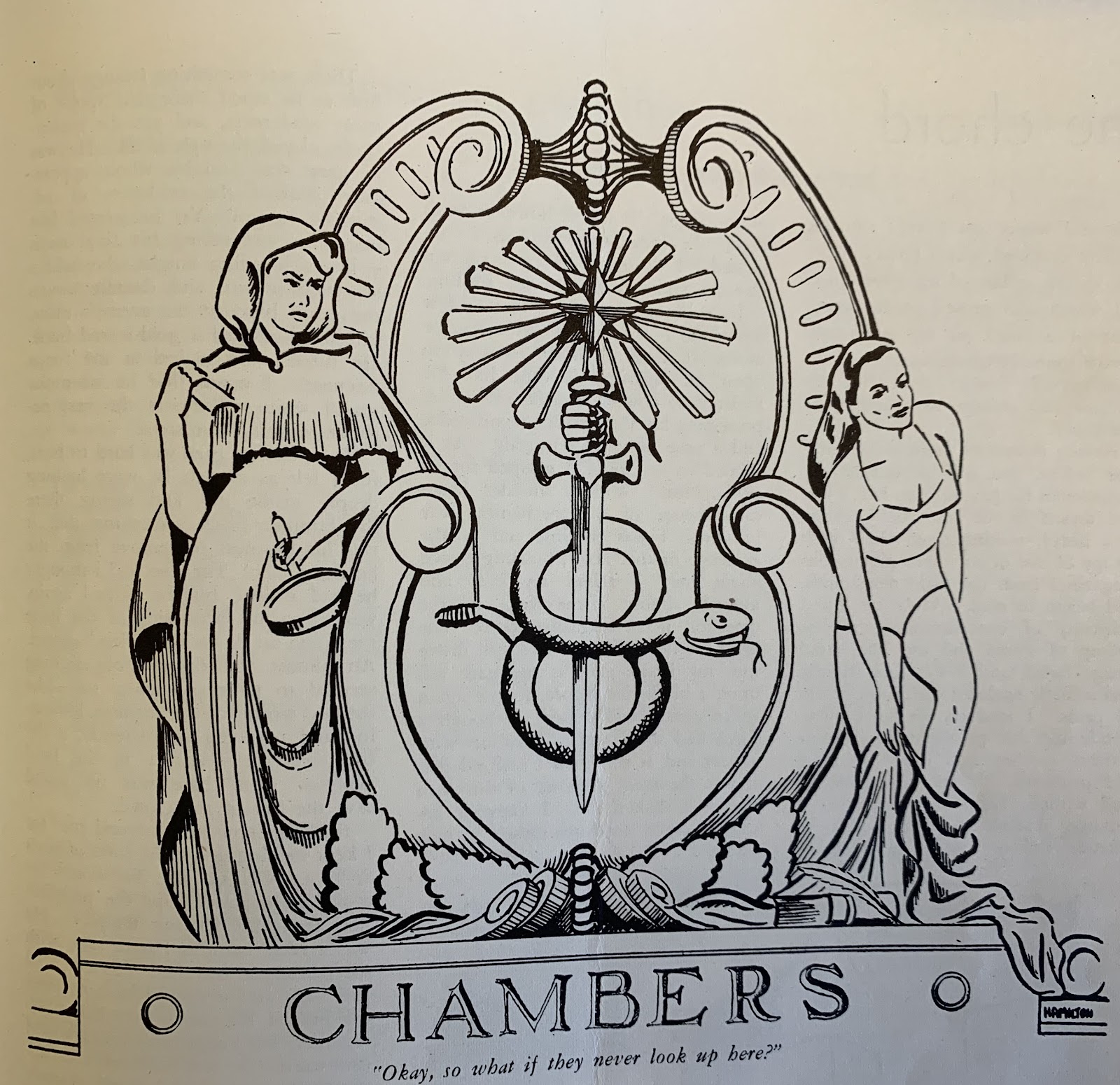
Hamilton, Bill. “Okay, so what if they never look up here?” Scripts n’ Pranks, Summer 1948, p. 9.
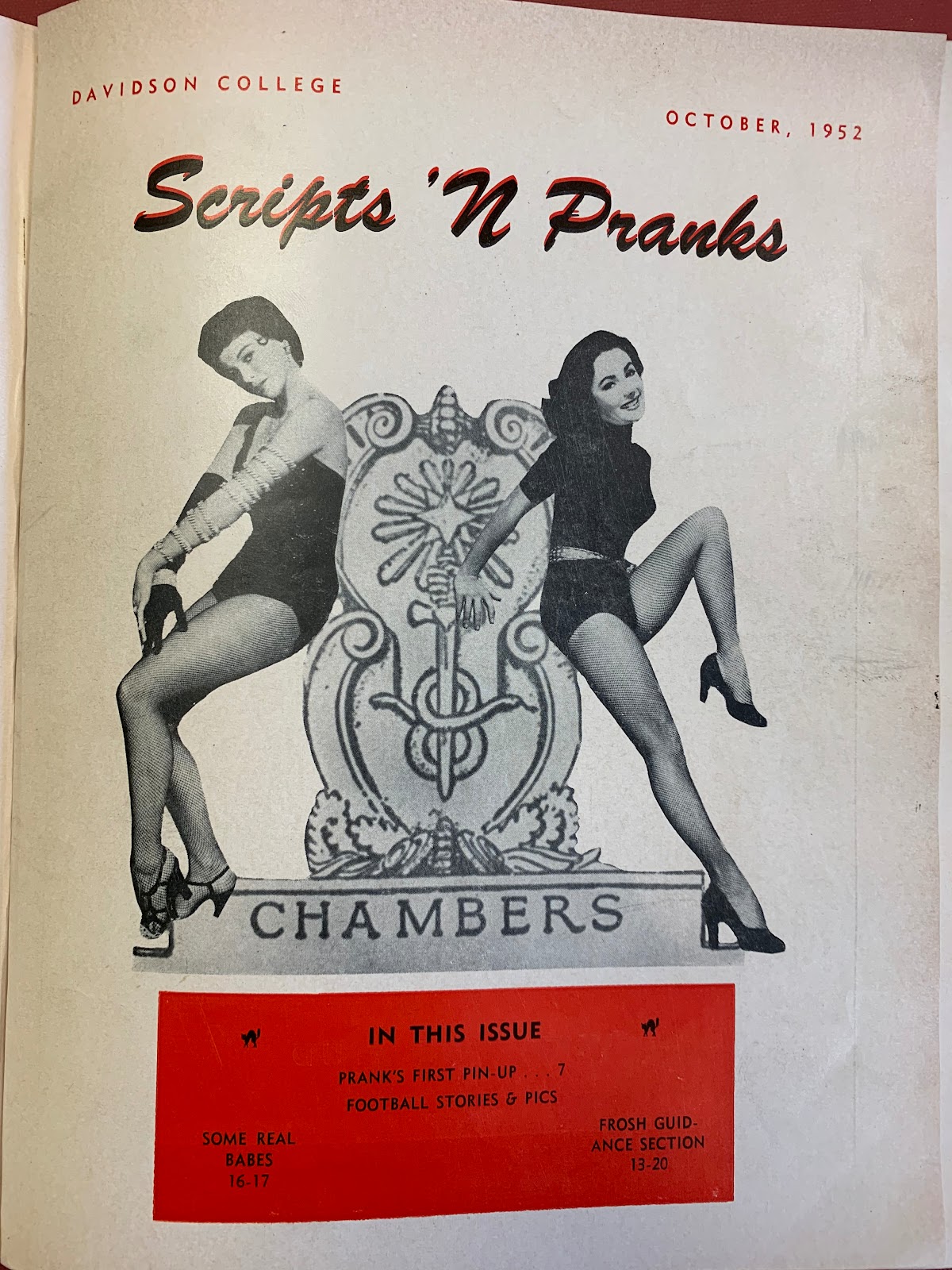
Alma and Mater updated for 1952.
6. They have cousins in Columbia.
As much as Davidsonians revere Chambers, our signature building—and its female guardians—may not be as unique as we’d like to imagine. Henry C. Hibbs, Chambers’ architect, designed many academic buildings, including the University of South Carolina’s McKissick Library (now McKissick Museum), whose dome and capstone bear an uncanny resemblance to Chambers and its maids. Davidson can take solace in the fact that Chambers was completed some ten years before the McKissick.
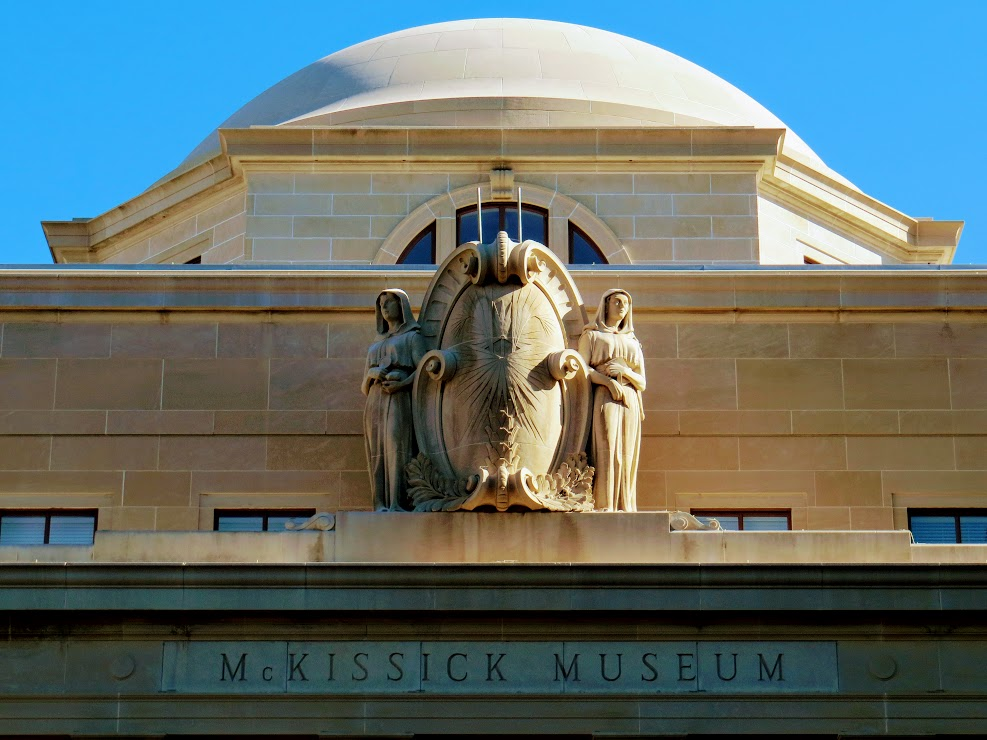
Source: The Living New Deal
7. They were mascots for female College employees.
Although in the 1950s, the College was not yet coeducational, more and more women joined the ranks of its administrative staff. They formed a social group, which a professor nicknamed the Chambermaids after the statues atop the building where most of the women worked. The women embraced the name, and it’s how the group was officially known until 1982, when they changed their name to Office Support Staff. Although the group did its fair share of socializing, it also lobbied successfully for many improvements for female employees, including tuition benefits for their children, campus representation, flexible summer work hours, and personal leave. The group was active until 2009.

The caption on this 1955 photo reads: “The original Chambermaids.”
8. They got company from time to time.
It can get lonely at the top. Fortunately for Alma and Mater, getting on the Chambers roof was something of a tradition for Davidson students of a certain era. Those who accomplished the task were often immortalized in the college yearbook—along with the Chambermaids.
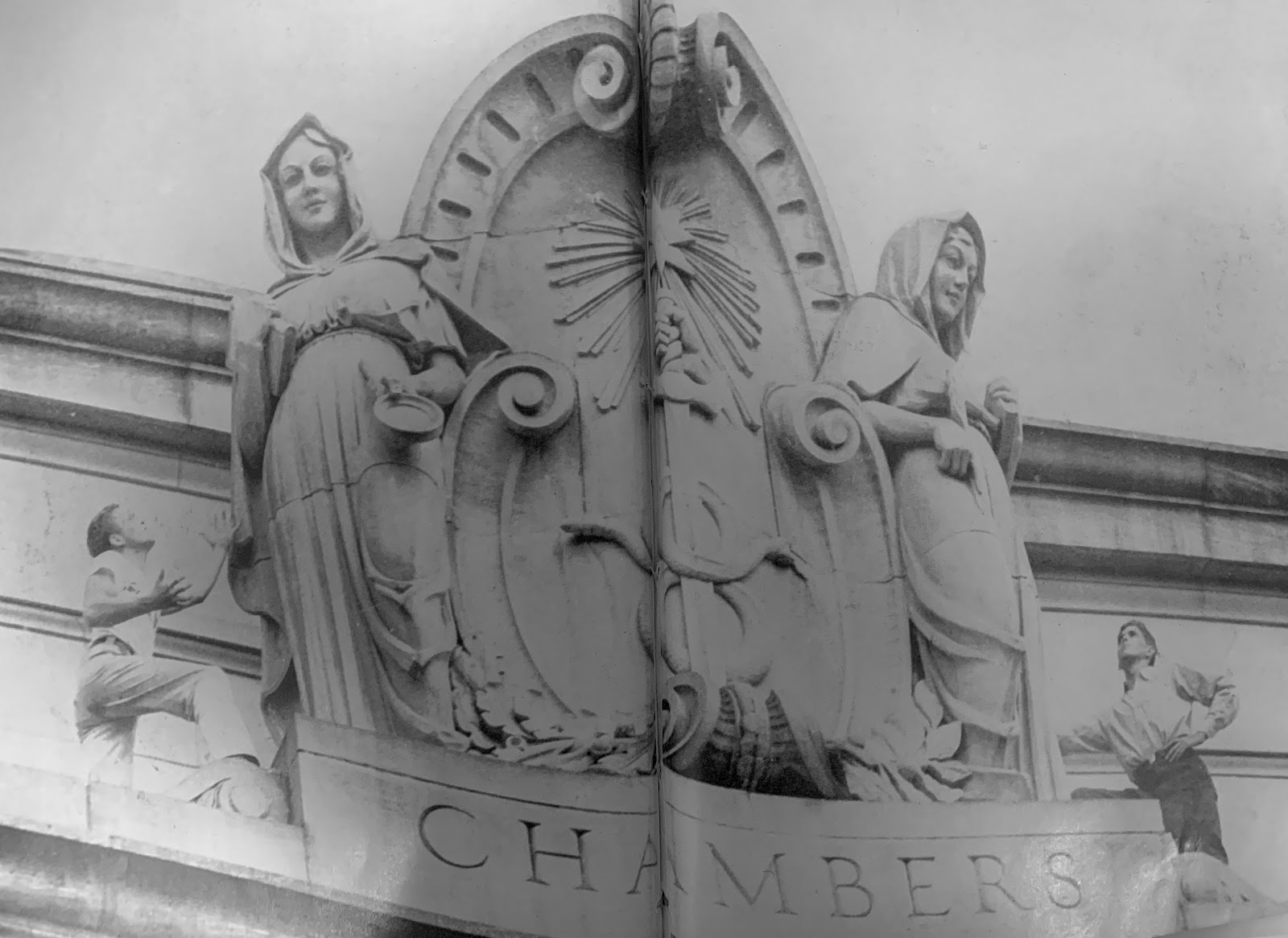
Quips and Cranks. In clockwise order: 1939, 1967, 1952
